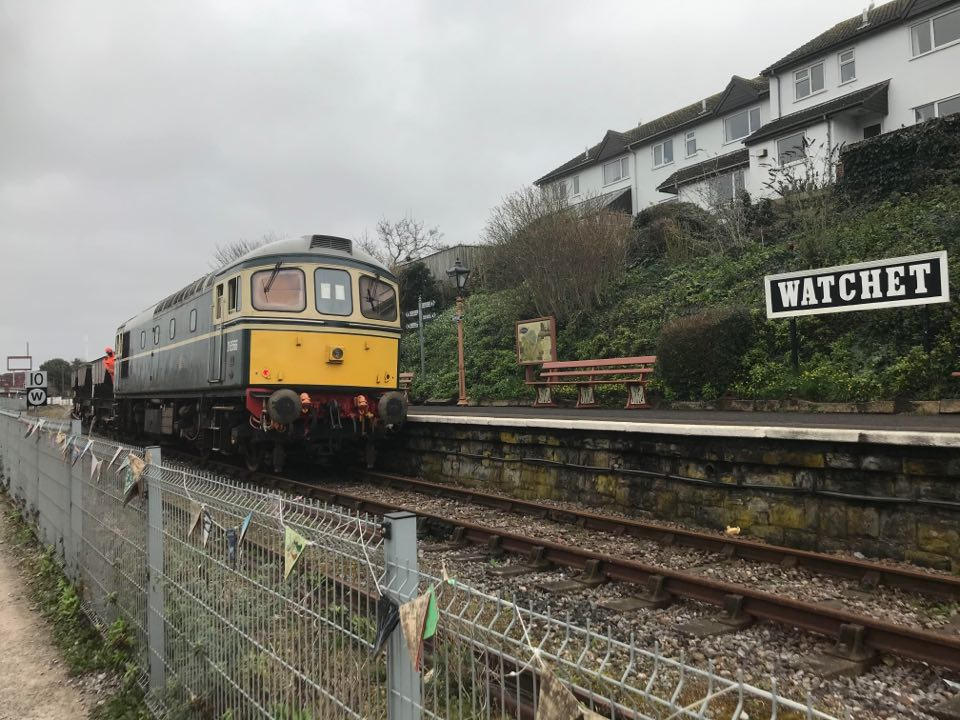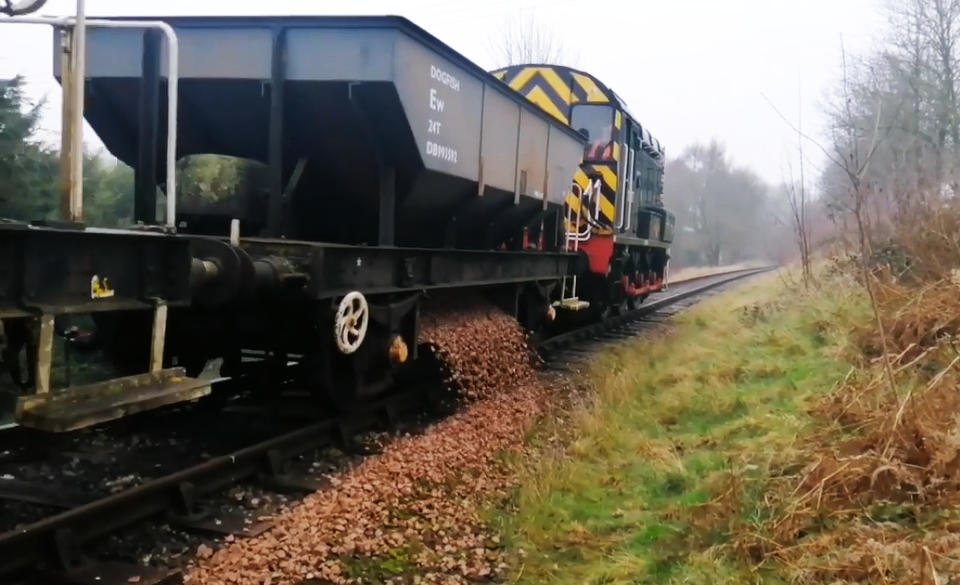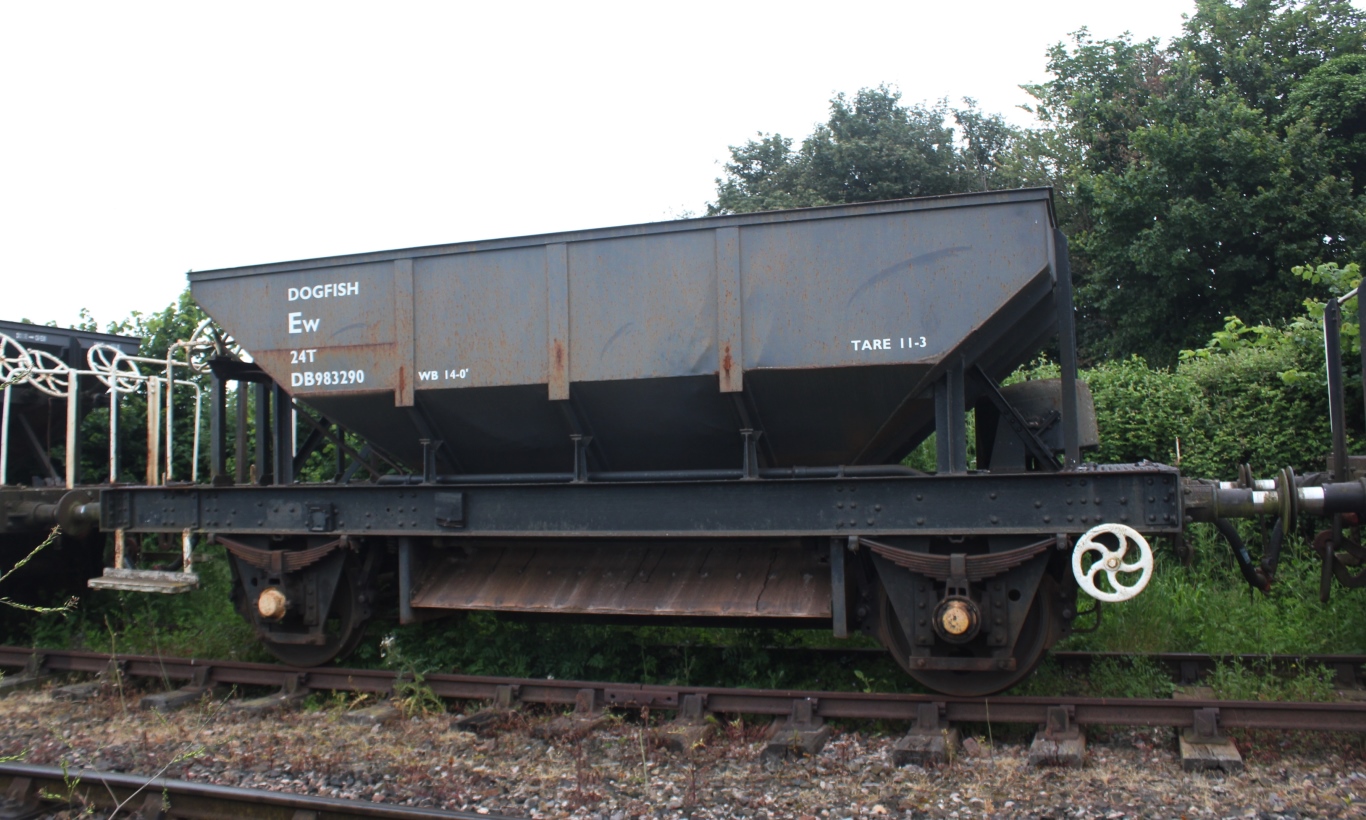Last week, it was our Class 14 ‘Teddy Bear’ D9526 that was in the spotlight, but this week, our Class 33 ‘Crompton’ D6566 has reclaimed the top spot after having an ‘A’ exam performed at Westridge Shed, Bishops Lydeard, last weekend. This was to prepare her for duty on the ballast trains that have been running from Williton to various places along the line, delivering ballast as required by the Infrastructure Engineering Department.
Eight hundred tonnes of ballast have been ordered by the WSR for distribution along the line. The ballast is used in quantity when relaying track at sites such as at Doniford, but it also used in smaller amounts for topping up and building up the shoulders of the trackbed at multiple places along the line. Considering the length of the line, a little ballast spread along both sides of a very long line will amount to a lot ! These photos, posted on wsr.org.uk last week, say it all:


The ballast workings are set to continue on Monday and Tuesday next week, and no doubt at other times that have yet to be confirmed. Sister Class 33 loco D6575 (33 057) has been re-positioned from Platform 1 at Williton (the ‘down’ line) to Platform 2 (the ‘up’ line) to leave the line clear for the ballast train workings. D6575 remains on standby and is fully ready and available for use by the WSR.
The DEPG offers its DIESELGEN service where we (try to) let you know by advance email whenever one of our locos is called into action. In previous years, this service was used to post the dates and times of loco-hauled passenger services, but since Lockdown 1.0, we have expanded it to include ANY working. The difficulty with engineering workings is that they run under the direction of the Infrastructure Engineering group, so dates and times will be varied to suit the circumstances on the day. The webcams provide the answer – we include webcam links in the Dieselgen bulletins so you can watch the live action !
To view the Williton webcam, click on this link. Many thanks to Railcam UK and the WSR for providing these webcam services.
Although it is great to see these locos and their crews at work on the WSR, we must all remember that the railway and the stations are still closed to the public. Safety is the number one priority.
The hopper wagons in use are ex-BR ‘DOGFISH’ types that were built in quantity from 1955 onwards. These wagons are very useful for heritage railways and many have been preserved. They incorporate three discharge chutes that allow ballast to be dropped to the right, to the left or on the centre line of the track, with each chute controlled by the white-painted handwheels that are mounted on the operator’s platform at one end of the vehicle. Each wagon is fitted with the continuous vacuum brake so a brake van (or Guard’s van) is not needed. The smaller white-painted wheel low down on the side of the wagon is for applying the handbrake when the wagon is not under the control of the vacuum brake.
There was a tradition in BR civil engineering days of naming types of wagon after fish or things ‘fishy’. This goes back to the old days of telegraph communication when a codeword was the most useful way of describing a type of wagon with the minimum risk of a mistake being made. There were MERMAID, TURBOT, SEACOW and other types of wagon. The WSR also has several of the smaller ‘CATFISH’ variety. Here’s a photo of a ‘DOGFISH’ (well, a ‘DOGFISH’ hopper wagon, actually):

Ex-BR ‘DOGFISH’ 24t hopper wagon number DB983290, seen here at Dunster station on the WSR on 8th June 2018. The three discharge control handwheels can be seen on the similar wagon to the left. The smaller handwheel at low level on the right is the handbrake. Photo by Geof Sheppard © CC BY-NC 3.0
LOCO NEWS: Other than that reported above, the status of our locos remains unchanged this week, due to lockdown.